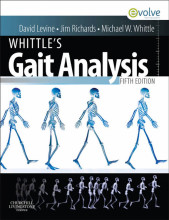Gait analysis in musculoskeletal conditions,prosthetics and orthotics
11 important questions on Gait analysis in musculoskeletal conditions,prosthetics and orthotics
What is a common procedure for in osteoarthritis in the hip?
What happens to the spatiotemporal factors after total hip replacement?
What is a very common observation in the kinematics after a hip replacement?
Increase in ipsilateral trunk lateral bending has also beenobserved during single limb support
- Higher grades + faster learning
- Never study anything twice
- 100% sure, 100% understanding
Why are these kinematics different?
What are changes in hip kinetics after hip replacement?
Which part of the knee suffers more from osteoarthritis and why?
Which two surgical approaches are there in knee osteoarthritis?
Uni-compartment knee replacement
High tibial osteotomy
These all reduce excessive loading on the medial compartment of the knee by correcting varus deformation.
What is the kinematic effect of total knee replacement?
Which muscles compensate for inadequate ankle function?
Why is there in the knee of an amputee very low joint moments and powers?
Why are the joint and ankle power profiles the most affected in joint kinematics in amputees?
The question on the page originate from the summary of the following study material:
- A unique study and practice tool
- Never study anything twice again
- Get the grades you hope for
- 100% sure, 100% understanding
































